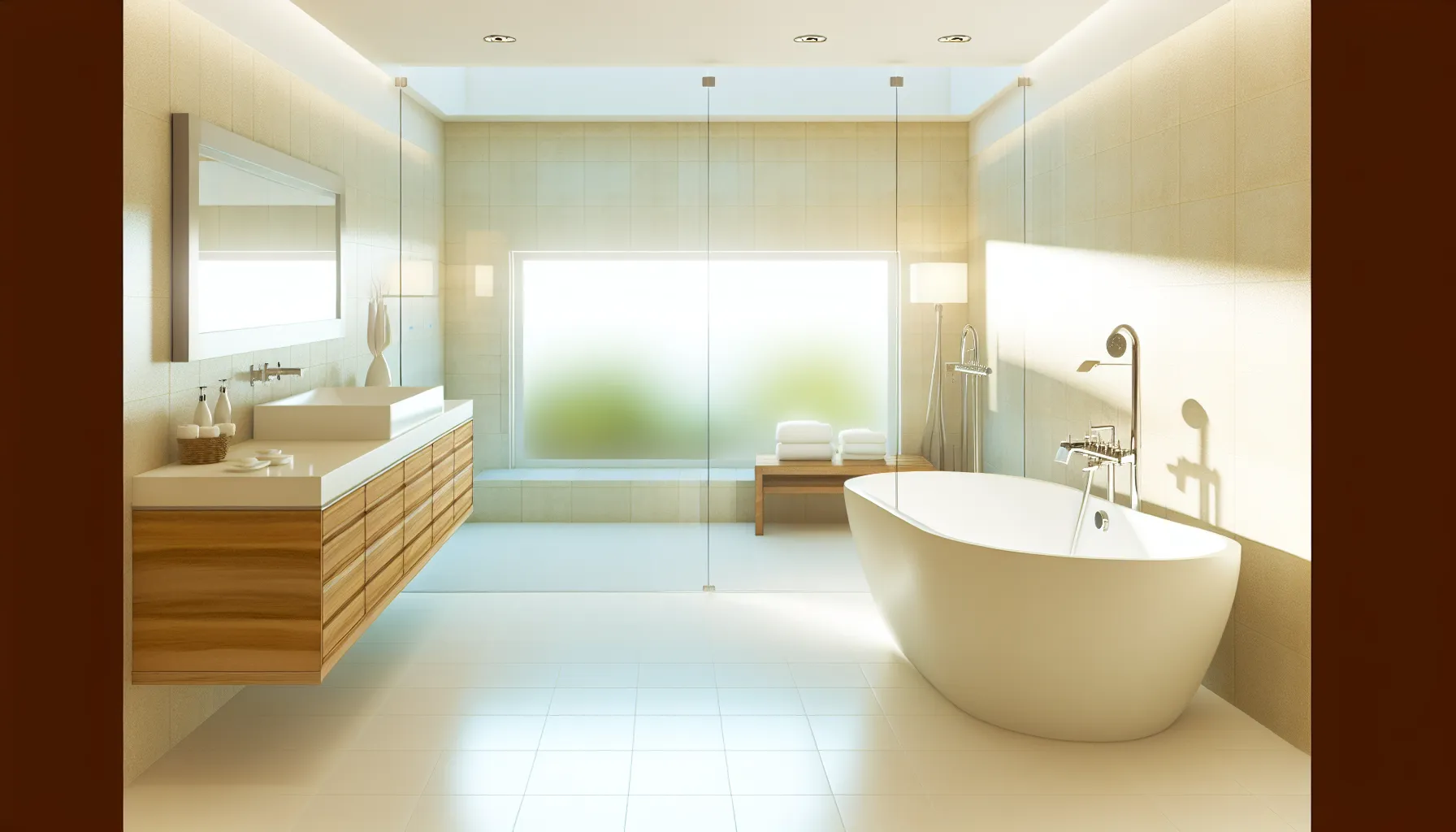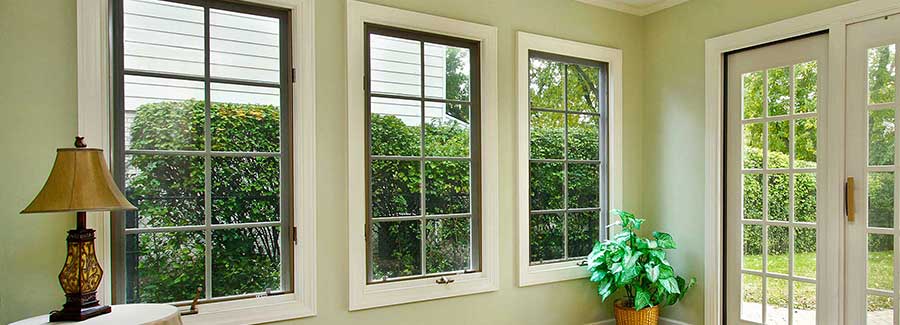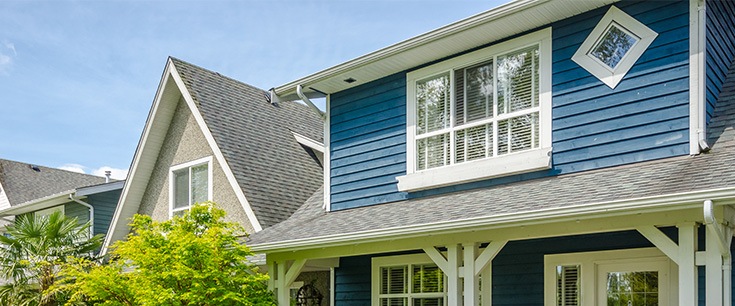Do Walk-In Showers Lower Home Value? – The Surprising Impact on Resale
Considering a bathroom renovation with a sleek, modern walk-in shower but concerned about your home’s resale value? It’s essential to ask: do walk-in showers lower home value? We cut through the complexities to help you understand how this upgrade affects your investment, balancing the lure of modernity with practical market consideration.
Key Takeaways
- Walk-in showers can increase home value and are particularly attractive to buyers looking for modern design and accessibility, offering a potential return of $1.71 for every dollar spent, while also presenting challenges, such as the risk of alienating buyers who prefer bathtubs.
- Real estate professionals suggest keeping at least one bathtub to appeal to a wider market, especially families with young children or pets; however, a trend favoring large, spa-like showers is on the rise, with 91% of buyers in a 2019 survey preferring them in a master bath.
- When remodeling for resale, homeowners must balance personal preference with potential resale impact, mindful of market trends and buyer demographics; yet, features catering to safety and accessibility, such as walk-in showers with safety adaptations, are valued for aging in place.
Walk-In Showers and Home Value

Walk-in showers are not just a symbol of luxury; they’re a smart investment for many homeowners. These modern amenities can give your property an edge in the competitive real estate market. Integrating a walk-in shower within the primary bathroom suite is known to attract buyers, thanks to their modern design and accessibility. In fact, for every dollar spent on adding a walk-in shower, the increase in home value can average $1.71, a return that’s hard to ignore.
Despite their appeal, walk-in showers can also present challenges. A bathroom equipped solely with a walk-in shower and no tub is labeled a three-quarter bath. This classification might deter certain buyers, such as families with young children, who often prefer a full bath with a tub for versatility. The installation costs, which can range from $1,000 to $15,000, must also be considered, as they factor into the overall return on investment calculations.
Balancing the aesthetic allure with practical considerations is key when planning to enhance your home’s value with a walk-in shower.
Pros of a Walk-In Shower
There’s no denying the sleek appeal of a walk-in shower. Its modern aesthetic can be tailored to fit various home decors, making it a versatile choice for those looking to update their bathrooms. Moreover, the perceived modernity and accessibility can make a home stand out to certain buyer segments, adding to its attractiveness. When it comes to maintenance, walk-in showers have the upper hand over traditional bathtubs. Their tile surfaces are typically easier to clean, demanding less effort to keep them looking pristine.
Safety and comfort are paramount, and walk-in showers excel in these areas. With their low or no-threshold design, they greatly reduce tripping hazards. This design feature, coupled with the option to include grab bars and non-skid floors, makes them especially appealing to individuals with limited mobility or those planning to age in place. Walk-in showers are not just about aesthetics; they’re about creating a safe and accessible environment for everyone in the household.
Cons of a Walk-In Shower
Yet, for all their advantages, walk-in showers are not without their drawbacks. Chief among these is the risk of alienating a significant portion of the market if you remove the only tub in your home. Some homebuyers have a distinct preference for a soothing soak over a quick shower, making the absence of a tub a dealbreaker. This is particularly true for families with children or pets, as a tub is often considered more suitable for their bathing needs.
The decision to convert a full bath to a three-quarter bath by installing just a shower stall can, in some cases, lead to a decrease in home value. This is especially true for homes that cater to young families, who may view a bathtub as essential. The lack of a tub following the installation of a walk-in shower could not only limit your pool of interested buyers but could also result in a loss in value, particularly if baths are an integral part of the family’s routine or if pets are part of the picture.
Bathtub vs. Walk-In Shower: The Resale Value Debate

Diving into the bathtub resale value debate, it’s clear that preferences are divided. While some potential buyers are drawn to the practicality and efficiency of a shower-only home, others can’t imagine a bathroom without a tub. Families with kids, pet owners, and bath enthusiasts often look for at least one bathtub when house hunting. On the other hand, demographics such as young professionals or empty nesters tend to lean towards modern showers that align with their convenience-driven lifestyles.
This split in preferences echoes the larger trend in today’s housing market, which sees a new segment of buyers favoring homes with shower stalls over bathtubs, essentially creating a “shower vs” bathtub debate.
Importance of At Least One Bathtub

Real estate professionals often advise maintaining at least one bathtub in a home to preserve its appeal to a broader range of prospective buyers. The presence of at least one tub can be a pivotal factor in sustaining higher resale values. For buyers with small children or pets, a home with at least one tub is more than a preference—it’s a necessity for their daily routines.
When it comes to homes with multiple bathrooms, including a full bathroom in the master bath with both a shower and a bathtub can be particularly attractive to over 50% of homebuyers, who see this combination as the ideal scenario.
Large Walk-in Shower Trend
Conversely, the trend toward larger, more luxurious showers is gaining momentum. Homeowners are increasingly opting for spacious walk-in showers, often equipped with upscale features like rainfall showerheads and built-in seating. This preference reflects a desire for a spa-like experience in the master bath, which can be a deciding factor in a home’s marketability, especially when considering a new shower.
In fact, a 2019 survey by the National Association of Home Builders revealed that a staggering 91% of homebuyers preferred a stall shower without a tub, or a larger shower space, in the master bathroom—a clear indicator of recent years’ shifting preferences.
Bathroom Renovations and Home Value
When it comes to bathroom remodeling, the value of a home can be significantly impacted by the choices made. Here are some features that can add substantial value:
- High-end finishes, such as durable porcelain or ceramic tile flooring
- Professional installation of heated floors
- Modernizing the vanity area with updated countertops, faucets, and sinks
- Adding double sinks
- Luxury shower features
These upgrades can help increase the value of your home.
In particular, transforming a tub to a large walk-in shower in the master bathroom and installing glass shower doors can serve as a major selling point and provide a solid return on investment.
Return on Investment
A carefully planned bathroom renovation can yield a high return on investment, especially when upgrading to features like a walk-in shower. On a national average, a midrange bathroom remodel can recoup 72.7% of the investment, with the use of high-end materials and professional finishes bumping up the resale value even more. And while a full renovation can be a financial undertaking, even modest updates can add significant value to a home.
For those who enjoy a touch of luxury, features like therapeutic jets and aromatherapy in walk-in tubs may not only align with personal tastes but could also attract future buyers, enhancing the overall value of your home.
Master Bath Makeover

The master bath often serves as a home’s crown jewel, and its condition can sway potential buyers. A modern, stylish master bath can significantly increase property appeal, drawing in home buyers who are looking for that special touch of luxury. The popularity of large, luxurious walk-in showers, with their spa-like features, reflects buyers’ desires for a bathroom that provides a retreat from the stresses of daily life.
Even smaller upgrades, such as the installation of double sinks, can have a major impact on a home’s selling points.
Key Considerations for Homeowners
When contemplating a bathroom remodel, homeowners are faced with a myriad of decisions. One of the most significant is whether to opt for a walk-in shower over a traditional bathtub. This choice can impact a home’s resale value, either positively or negatively, depending on market trends, demographics, and buyer preferences.
Homeowners must evaluate their long-term plans, including whether they intend to sell their home within a short period or remain for the long haul, as this will influence the types of renovations that will be most beneficial. Budget and resource availability are also critical considerations, ensuring that any bathroom projects embarked upon are financially feasible.
Future Resale Potential
The future resale potential of a home is a crucial factor to consider when deciding on bathroom renovations. If homeowners plan to sell within the next 5-10 years, the removal of a tub could significantly affect offers and overall resale value, given current market trends. For those planning to stay in their home for the long term, the practicality of walk-in showers, with their numerous accessibility features, makes them a sound investment that may not significantly impact resale value in the distant future.
In homes with multiple bathrooms, the decision to replace a bathtub with a walk-in shower may have a less pronounced impact on home value as opposed to homes with fewer bathrooms.
Balancing Personal Preferences and Resale Value
Striking the right balance between personal preferences and potential resale value is essential when considering a bathroom remodel. While some homeowners may be swayed by the luxury and accessibility of walk-in showers, regional market preferences can vary, with some areas placing a higher premium on traditional bathtubs.
The layout and size of the bathroom should also be considered, as showers use less space than bathtubs and may appeal to potential buyers looking for efficient homes or maximizing bathroom space. When planning renovations, it’s essential to consider the local demographics to ensure the changes meet potential buyers’ needs and increase the property’s marketability. Local demographics should inform renovation decisions, as areas with a high number of young families may favor homes with a bathtub, which could influence the resale potential. Additionally, in urban settings where there may be a higher concentration of young professionals, preferences might lean towards homes with modern, high-end showers, reflecting their lifestyle and needs. Understanding these preferences can guide homeowners in making strategic updates that appeal to the most likely buyers in their area.
Creating an Accessible and Safe Bathroom

The design of a bathroom goes beyond aesthetics; it’s about creating a space that is accessible and safe for all users. Bathrooms pose numerous challenges as people age, such as slippery surfaces and tight areas, which can lead to a high risk of falls. This necessitates critical adaptations like:
- accessible features
- grab bars
- non-slip flooring
- raised toilet seats
- walk-in showers
These adaptations help maintain independence, privacy, and dignity.
Installing non-slip surfaces and ensuring that commonly used items are within easy reach while clearing clutter can significantly enhance safety and prevent accidents, especially for older people at risk of falls.
Aging in Place
Aging in place is a concept that allows individuals to live independently in their own homes as they grow older. This often requires modifications to ensure safety, such as:
- Installation of grab bars
- Non-slip flooring
- Adequate lighting
- Walk-in showers, particularly beneficial for those with mobility issues
- Handheld shower heads
- Raised toilet seats
- Lever-style faucets
These modifications can aid in aging in place and provide a more accessible and safe environment.
Walk-in tubs are a common initial modification due to their combination of safety and luxury, often increasing a home’s value in communities with higher populations of older individuals or those with mobility issues.
Preventing Accidents
Safety features are paramount in preventing accidents in the bathroom, particularly in walk-in shower areas. Walk-in showers equipped with grab bars offer additional stability, reducing the risk of slips and falls. Additional measures to consider for a safer bathroom experience include:
- Using non-slip flooring materials
- Ensuring adequate lighting
- Labeling taps to prevent hot water burns
- Installing night lights
- Using ease-of-use fixtures
Implementing these measures can help create a safer environment in your bathroom.
Such features not only provide a sense of security and comfort but also enhance the appeal to potential home buyers who prioritize safety.
Summary
Whether to install a walk-in shower or stick with a traditional bathtub is a decision interwoven with factors such as current market trends, personal needs, and the long-term plans of the homeowner. While walk-in showers offer modern aesthetics, easy maintenance, and accessibility, the presence of at least one bathtub can make a home more appealing to a broader audience. Homeowners must balance their desire for a contemporary bathroom with the considerations of future resale value. Particularly for families with young children or individuals who prioritize relaxation and self-care, a bathtub can be seen as an indispensable feature. For these potential buyers, the absence of a bathtub in the master bathroom could be a deal-breaker, underscoring the bathtub’s significance in not only meeting the practical needs of certain demographics but also in ensuring the home remains attractive to a diverse range of buyers in the future.
Consulting a real estate expert plays a crucial role in determining whether to retain a master bathtub for enhancing resale value. Such experts leverage their in-depth understanding of local market trends and buyer preferences to offer tailored advice. This ensures homeowners make informed decisions that align with the potential buyers’ desires in their specific geographic area.
When planning renovations, it’s essential to consider the local demographics to ensure the changes meet potential buyers’ needs and increase the property’s marketability. Local demographics should inform renovation decisions, as areas with a high number of young families may favor homes with a bathtub, which could influence the resale potential. Additionally, in urban settings where there may be a higher concentration of young professionals, preferences might lean towards homes with modern, high-end showers, reflecting their lifestyle and needs. Understanding these preferences can guide homeowners in making strategic updates that appeal to the most likely buyers in their area.
Whether to install a walk-in shower or stick with a traditional bathtub is a decision interwoven with factors such as current market trends, personal needs, and the long-term plans of the homeowner. While walk-in showers offer modern aesthetics, easy maintenance, and accessibility, the presence of at least one bathtub can make a home more appealing to a broader audience. Homeowners must balance their desire for a contemporary bathroom with the considerations of future resale value. Particularly for families with young children or individuals who prioritize relaxation and self-care, a bathtub can be seen as an indispensable feature. For these potential buyers, the absence of a bathtub in the master bathroom could be a deal-breaker, underscoring the bathtub’s significance in not only meeting the practical needs of certain demographics but also in ensuring the home remains attractive to a diverse range of buyers in the future.
Ultimately, the most successful renovations are those that harmonize personal preferences with the practical demands of safety, accessibility, and marketability.
Frequently Asked Questions
Does a walk-in shower add value to a house?
Yes, replacing a tub with a large walk-in shower in the master bathroom can raise your home’s value, but it’s important to ensure that at least one bathroom in the house still has a bathtub for potential buyers with small children.
Is a walk-in shower a good investment?
Yes, a walk-in shower is a good investment as it can increase the value of your home, especially if you already have another bathtub. So, it’s important to consider the existing features in your bathroom.
Does a walk-in tub devalue your home?
Adding a walk-in tub can increase your home value, especially if you live in an area with a higher number of older people or people with mobility issues. Additionally, incorporating luxury features like water jets can further enhance your property’s value.
Do buyers prefer baths or showers?
Buyers generally prefer homes with at least one bathtub for the highest resale value, and over 50 percent of home buyers prefer a master bath with both a bathtub and a shower, according to a study by the National Association of Home Builders (NAHB).
Can a walk-in shower be suitable for aging in place?
Yes, a walk-in shower can be suitable for aging in place when customized with features like grab bars, non-slip floors, and ADA-compliant seats to enhance safety and independence.
Contact Us Today for an in-home consultation.



